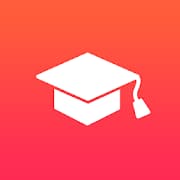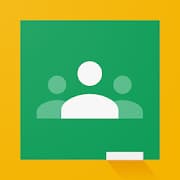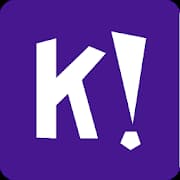21st Century Teaching Tips: Supercharging the Classroom with Technology
Reviewed by Jon Konen, District Superintendent
Today’s teachers are frequently strapped for time and resources, making the thought of incorporating new technology into lesson plans feel overwhelming for many. While making the leap can take some time, many educators now sing the praises of educational technology in cutting down paperwork, promoting active learning, and encouraging different learning styles.
Research conducted by the U.S. Department of Education found that many educators reported that technology helped to facilitate peer collaboration, while others saw improvements in their students’ ability to share and work together. Today’s young learners have never known a world without technology, and learning how to use these tools while in school is an important life skill. Here, we look at how technology can benefit students and teachers alike.
How Can Technology Help Teachers?
Speeds up grading
Using digital tests and assignments that self-grade multiple choice and true/false questions saves teachers countless hours of grading while also providing assessment data. With access to this type of insightful information, teachers can create informed, dynamic assessments and ensure learners absorb lessons.
Makes parent communication easier
Any teacher who is also a parent knows the unnerving feeling of seeing their child’s school pop up unexpectedly on caller ID. It can also be more comfortable to get in touch with parents by sending an email rather than calling, whether to convey information or arrange a lengthier conversation. Additionally, using technology to communicate with parents provides a documentation chain, in case you need to refer to the conversation later.
Helps individualize learning
When working in an inclusive classroom, incorporating educational technology can help provide accommodations for students with disabilities. Teachers can allow students to test in a separate environment, provide differentiated exams, and replace pen and paper with a keyboard or voice recording app when taking notes. For students with verbal disabilities, technology can literally provide a “voice” for them, allowing them to convey their ideas through writing or pictures, which are then “spoken” by their device.
Stops back problems—because your bag will be lighter
Completing assignments and tests online benefits both teachers and students, as fewer physical items can be lost. Students are far less likely to misplace a tablet or laptop than a book, and teachers will have fewer papers to keep up with.
Lets you text parents and students without sharing your number
It’s a lot easier to send a text than to sit down at a computer and write an email, but you probably don’t want to share your personal phone number with parents or students. Thankfully, plenty of apps exist that shield your number and allow you to contact whole classes or individual students/parents via your phone or another device. This is an excellent option for coordinating after-school activities and field trips. Classting and Remind are two options.
Shows you students’ work in real time
Rather than continually walking up and down rows of desks to ensure students stay on task and get the help they need, programs such as LanSchool and Veyon allow teachers to keep an eye on everyone at once. With the touch of a button, these programs let educators monitor screens, make corrections, and view progress. In addition, Backchannel Chat is an excellent tool for letting students ask questions so you can assess whether they find a particular topic confusing—without necessarily having to share their confusion with the class. You can use this information to clarify and adjust as needed.
Takes away some chances for human error
Teachers who use self-grading exams and digital grade books are required to do less math and note-taking, resulting in fewer record-keeping errors. When educators spend fewer hours grading a stack of exams, they are also less exhausted and less likely to make mistakes.
Allows you to make videos of lessons and student presentations
Recording lessons can provide several benefits to both students and teachers. Recording lessons and posting them to a class site allows students to revisit portions as needed. If a teacher needs to be out of school for a few days, they can also prerecord some interactive videos to keep students on task. BookWidgets and Edpuzzle both provide several great functions in this realm. Teachers can also record students’ presentations, allowing them to revisit the work for both grading and feedback.
What are the Student Benefits of Technology Use?
Inspires individualized learning
Rather than trying to learn in a way that doesn’t work for them, educational technology makes it possible for students of varied capabilities to engage fully in their work. Students with learning challenges as well as giftedness can learn at their own pace, while English as a second language students can get real-time help with translations.
Better prepares them for the future
Approximately 77% of jobs require technology skills, and that number is expected to rise. By introducing and engaging students with technology early on, they become native users, while also honing their understanding of digital civic engagement.
Increases student engagement
Studies have shown that attention spans have substantially shortened over the previous decades, creating a struggle for teachers who want to engage their students and ensure lessons stay with them. Technology can significantly help in this endeavor. Rather than assigning stale projects, educational technology allows for dynamic assignments, such as recording podcasts, writing blogs, playing educational games, or developing engaging infographics. When students engage different parts of their brains, they are far more likely to retain new information.
Boosts productivity levels
Today’s students have grown up with technology and can navigate various tools and apps with ease. Incorporating tablets and laptops stocked with helpful educational programs allows students to accomplish their work in a shorter amount of time than if they were required to write out an assignment by hand.
Encourages collaboration
Rather than working on a project or assignment in a silo, students connected by technology can collaborate to seek answers, develop creative solutions, and recognize how other learners bring innovative and unique approaches to problem-solving.
10 Tips for Using Technology in Your Classroom
With so many different types of educational technologies available, finding the best ones and implementing them in the classroom can feel overwhelming. In this section, we look at a few best practices in the world of EdTech that you can adapt to your style. The technologies mentioned are tools and apps that can help support you in achieving some of the benefits outlined on this page.
1. Focus on Content, Not Tools
Rather than stressing yourself out trying to learn about each tool, focus on your subject area. Find technology that enhances your teaching rather than trying to incorporate every hot new app. As Kelsey Bell, author of Shake Up Learning, puts it: “If you cannot explain how the digital tool enhances or improves the learning experience, you are just using technology for technology’s sake.” The outcome or goal should determine the tool, not the other way around. A few tips for achieving this goal:
2. Remember Tried-and-True Resources
With new EdTech dropping all the time, you can easily feel dazed trying to keep up. But there’s a reason that tried-and-true sources and approaches stick around. A few resources to keep in mind:
3. Provide Choices for Students
Bringing your students along in finding new and applicable technology can benefit everyone involved, but provide an approved list that students select from rather than letting them run loose on the web. A few ideas for making this work include:
4. Always Have a Plan B—Technology is Great, but it’s Imperfect
Despite the best-laid plans, sometimes the Wi-Fi goes out or an app decides not to function one day. When this happens, it’s crucial to have a back-up plan, both for your ability to do your job and for keeping students engaged. A few tips and recommendations:
5. Use Cameras to Document and Share Work
In this digital-oriented world, there are many exciting resources at your disposal for documenting standout student work, staying in touch with parents, and creating portfolios. Cameras are a great tool for capturing students working together, impressive pieces of art, or activities on a field trip. A few things to keep in mind:
6. Use Tech to Teach Storytelling
While we may not necessarily think of digital media and educational technology when considering how to best tell a story, these tools can help learners step beyond traditional bounds and create dynamic experiences. A few ideas include:
7. Explore Virtual Reality (VR)
Virtual reality can complement reading and learning about new ideas and cultures. Learning about the highest peaks in the world or the surface of the moon can be interesting on traditional slides, but even more so with VR tools. VR can bring topics alive and get students excited about learning. Some tools to know about include:
8. Learn from Your Peers with Professional Learning Networks (PLNs)
As Caleb Clark, Director of the Marlboro College Graduate School EdTech program, states: “You might be able to keep up with some technologies alone, but there is almost always more power in numbers […] Your best hope to keep up is to rely on your peers. Familiarize yourself with a particular technology and join a small group of educators who are keeping up with others.” A few PLNs worth knowing about include:
9. Introduce Web-Based Portfolios
Asking students to create a web-based portfolio allows them to build specific skills using apps and software while also helping them consider how they want to present themselves online. As Clark comments, “Students are faced with questions such as: Who am I online? What kind of job do I want? What’s my best work? What did I learn? […] building an efolio is intrinsically motivating to most students since it is personal, social, and creative.” A few tools to help you get started include:
10. Share Your Knowledge—Even if You’re Nervous
After familiarizing yourself with the endless educational technologies out there, share your knowledge. Work with school administrators to arrange teacher-demonstrated uses of tools, to help other educators adopt them. The benefits of sharing knowledge include:
What are the Challenges with Technology?
Students can abuse their access to the Internet
If you put a computer or laptop with no type of content filter in front of a student, don’t be surprised if they sneak a glance at their social media during class time. If you want to ensure students stay on task, encourage your administration to install a blocker that only allows access to certain types of pages. PDST explains how different levels of content filters can be helpful. However, some savvy students find ways around content blockers, so it is still important to monitor online behavior.
Parent communication may occasionally be overwhelming
When parents can see how their students perform on tests, exams, and assignments in real-time rather than waiting for paper copies to make their way home, they may be more likely to reach out with questions or concerns frequently—and before taking a “cooling off” period. If this becomes a problem, set “office hours” so parents know when you might be most available—and turn off alerts outside of those hours. Also, provide a time frame for responses—it isn’t reasonable for parents to expect you to respond to every message immediately. Communicate these hours and expectations to parents and stick to your rules.
Bugs, dropped WiFi, and other technical problems
Technology can make the lives of teachers more manageable, but it can be a problem when it doesn’t work correctly. Always have a plan B in case of uncooperative technology. This may include downloading your presentations and assignments so they are available offline. If using Google Classroom, Docs, Sheets, and Slides can often still be accessed, viewed, and edited without the Internet, though it may be best for students to also download them if your school’s Wi-Fi is particularly touchy.
Staying up-to-date on emerging tech
With so many new types of educational technology being released each year, it can be hard to stay aware of new tools and apps. Rely on knowledgeable sources to provide tried-and-tested reviews of emerging options. The Ed Tech Round Up and The Innovative Educator offer great blogs and news articles, while EdTECH Weekly provides an engaging weekly podcast.
Learners may become overly dependent on technology
If schools rely too heavily on educational technology, students may not know how to find tech-free solutions to problems and, perhaps, struggle with face-to-face communication. According to a 2016 study by the National Association of Colleges and Employers, 78.9% of employers look for teamwork and 68.9% for verbal communication skills on resumes, compared to 59.6% who value technical expertise and 55.3% who desire computer skills. Soft skills truly matter.
Technology Resources for Teachers
 | Additio: Available through the Apple Store, Google Play, and as a web-version, Additio is a suite of classroom management tools that make it easier to record attendance, input grades, and create timetables. |
| Basic timers: Available via apps or websites, teachers can project timers onto the classroom screen or white board so students know how much time they have for an activity. Pro tip: Do not use such timers during exams as they can increase anxiety. | |
 | ClassDojo: 95% of U.S. schools currently use ClassDojo to create classroom directions, generate random groupings, monitor noise levels, communicate with students and parents, and allow learners to customize their experiences through portfolios. |
 | Classtree: This easy-to-use tool helps teachers collect consent forms for field trips, share photos with parents, and reach out to both students and parents with the touch of a button. It works on both iOS and Android devices. |
 | Google Classroom: This free service allows teachers to develop classwork, create tests and assignments, communicate with students, save work, and streamline the teaching process. Google Classroom can be used in K-12 settings and works on any device that has a Google email address attached. |
 | Kahoot!: Accessed by more than one billion users annually, Kahoot! enhances learning by providing fun, yet educational games. This program is used in K-12, college, and professional training settings, and works on iOS/Android devices. |
 | Socrative: Teachers can set up quizzes and polls, get instant feedback, and better understand where individual or class-wide gaps in knowledge exist. Socrative is great for elementary through high school students and can be accessed on any computer. |
